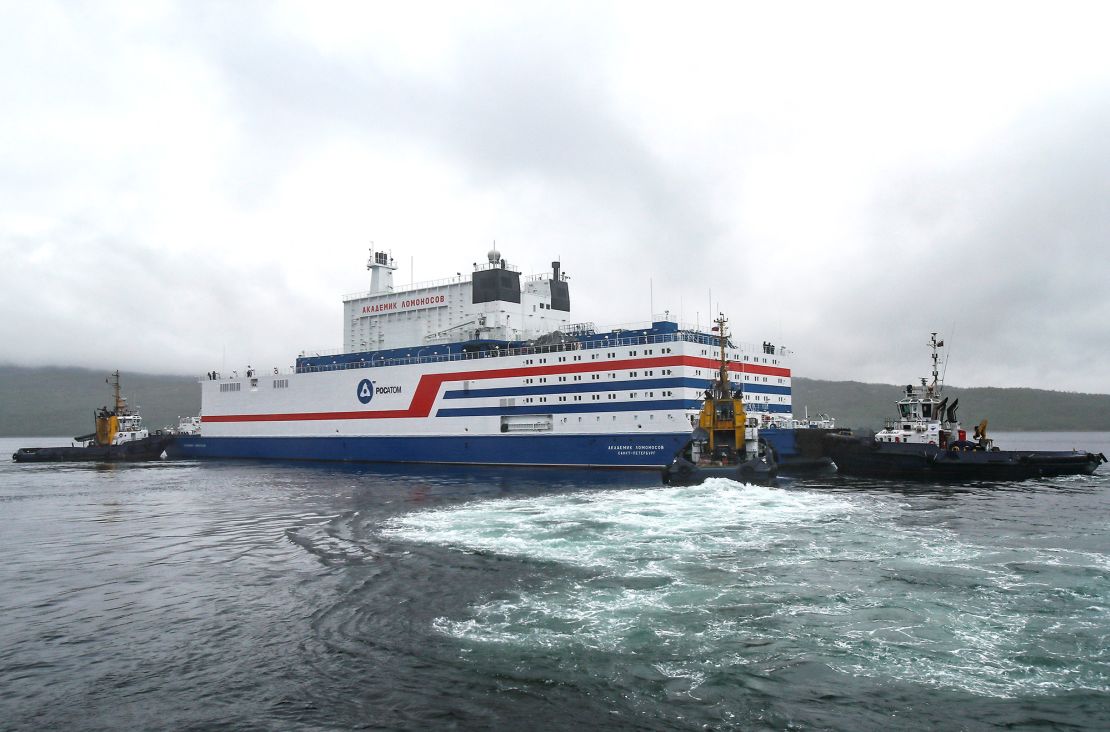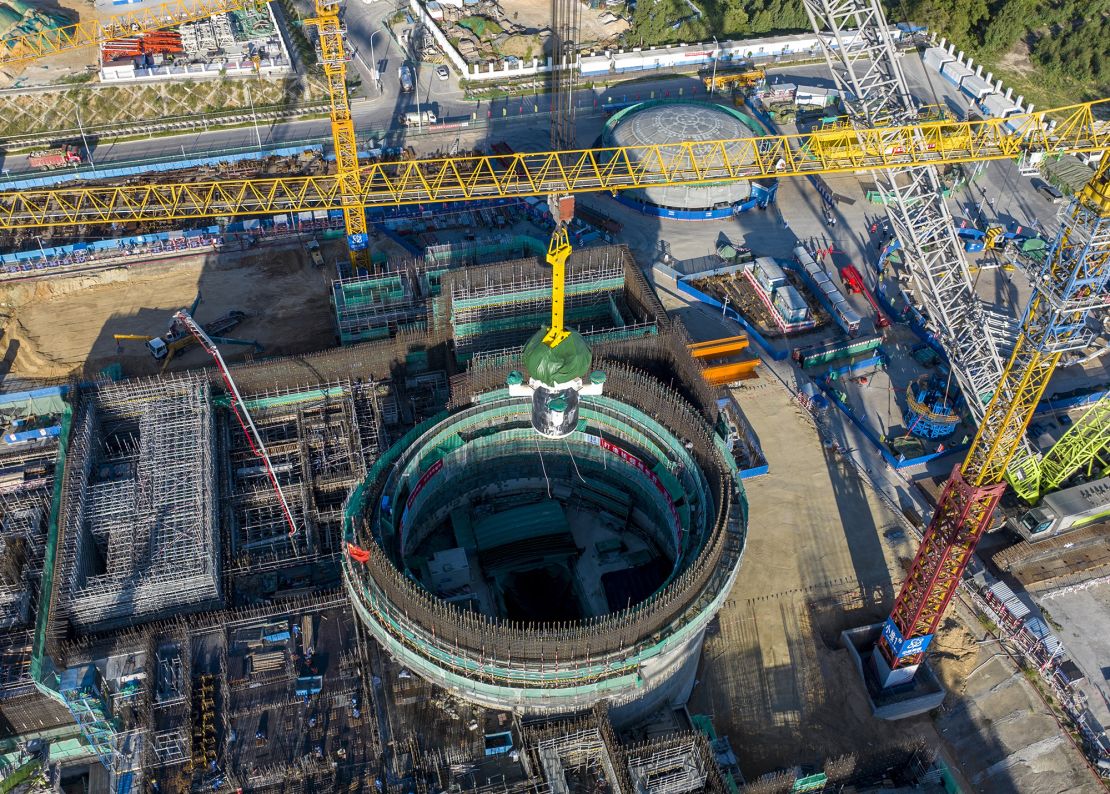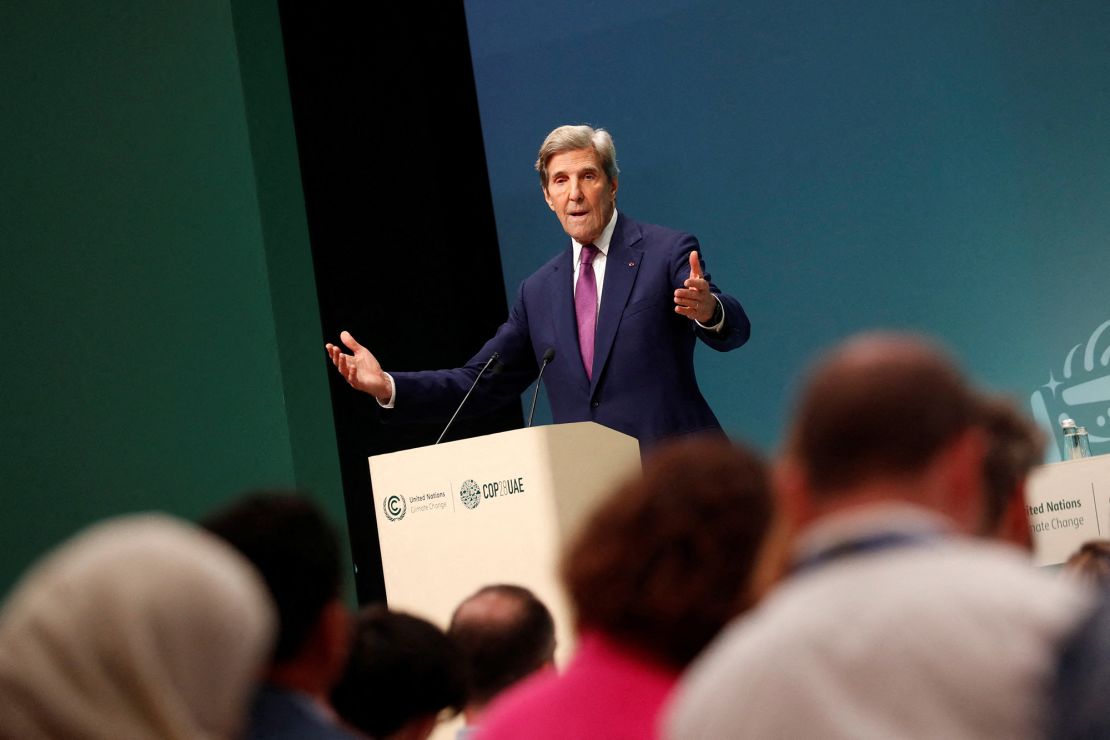CNN
—
Off the Siberian coast, not removed from Alaska, a Russian ship has been docked at port for 4 years. The Akademik Lomonosov, the world’s first floating nuclear energy plant, sends vitality to round 200,000 individuals on land utilizing next-wave nuclear expertise: small modular reactors.
This expertise can be getting used under sea stage. Dozens of US submarines lurking within the depths of the world’s oceans are propelled by SMRs, because the compact reactors are recognized.
SMRs — that are smaller and more cost effective to construct than conventional, large-scale reactors — are quick changing into the subsequent nice hope for a nuclear renaissance because the world scrambles to chop fossil fuels. And the US, Russia and China are battling for dominance to construct and promote them.
The Biden administration and American firms are plowing billions of {dollars} into SMRs in a bid for enterprise and international affect. China is main in nuclear expertise and development, and Russia is making nearly all of the world’s SMR gas. The US is taking part in catch-up on each.
There’s no thriller behind why the US desires in in the marketplace. It already misplaced the wind and photo voltaic vitality race to China, which now supplies many of the world’s photo voltaic panels and wind generators. The massive downside: The US hasn’t managed to get an SMR working commercially on land.

SMRs are doubtlessly an unlimited international market that might deliver cash and jobs to the US, which is attempting to promote whole fleets of reactors to international locations, fairly than the bespoke, large-scale energy vegetation that notoriously go over finances and well past deadline.
Whereas SMRs present much less vitality — usually a 3rd of a conventional plant — they require much less area and could be constructed in additional locations. They’re made up of small elements that may be simply delivered and assembled on web site, like a nuclear plant flatpack.
Most international locations are attempting to quickly decarbonize their vitality methods to deal with the local weather disaster. Wind and photo voltaic now present at the very least 12% of the world’s energy, and in some locations, just like the European Union, they supply greater than fossil fuels. However there’s an growing sense of urgency to wash up our vitality methods as excessive climate occasions wreak havoc on the planet and as challenges with renewables stay.
For some specialists, nuclear vitality — in all varieties, massive or small — has an essential function to play in that transition. The Worldwide Vitality Company, which outlined what many specialists say is the world’s most real looking plan to decarbonize, sees a have to greater than double nuclear vitality by 2050.
“There’s undoubtedly an enormous race on,” stated Josh Freed, who leads the Local weather and Vitality Program on the suppose tank Third Method. “China and Russia have extra agreements to construct all kinds of reactors abroad than the US does. That’s what the US must make amends for.”
US targets Russia’s and China’s neighbors
The US is attempting to promote SMR expertise to international locations which have by no means used nuclear energy of their histories. To persuade them that SMRs are possibility, they’ll have to pitch exhausting on security.
Globally, the development of typical nuclear energy vegetation dipped following the Chernobyl meltdown in 1986, and fell once more after Japan’s Fukushima catastrophe in 2011, knowledge from the World Nuclear Business Standing Report reveals. They began to tick up quickly after, however new tasks have been closely concentrated in China.
Many of the world has been chilly on nuclear for the previous decade or so.
However a nuclear renaissance is coming, the IEA says. The group predicts nuclear energy era globally will attain an all-time excessive in 2025. That’s as a result of a number of conventional nuclear vegetation in Japan that have been placed on pause after Fukushima will quickly be restarted, and new reactors in China, India, South Korea and Europe will begin working.
Plainly decades-old fears over the security of nuclear are beginning to fade, and folks — or their governments at the very least — are weighing the advantages towards the dangers, together with the issue of storing radioactive waste, which might stay harmful for hundreds of years. That might create a extra hospitable marketplace for international locations seeking to export SMRs.
If SMRs assist increase the recognition of nuclear vitality, they may turn into a robust solution to deal with local weather change. Nuclear energy, usually, doesn’t emit planet-warming carbon air pollution when used and generates extra vitality per sq. meter of land use than any fossil gas or renewable, in accordance with an evaluation by Our World in Knowledge.
On the COP28 local weather talks in Dubai in December, the US led a pledge to triple the world’s nuclear vitality capability, which 25 nations have now signed onto. And the US authorities has earmarked $72 million to its worldwide SMR program, generally known as FIRST, to offer international locations with a complete suite of instruments — from workshops to engineering and feasibility research — to offer them with all the things they should purchase an SMR fleet made in America.
However larger cash is coming within the type of loans from state monetary establishments, just like the US Export-Import Financial institution and its Worldwide Growth Finance Company, which have supplied up $3 billion and $1 billion, respectively. These have gone to 2 SMRs in Poland designed by GE Hitachi Nuclear Vitality, a US-Japanese partnership headquartered in North Carolina.
The US and American firms are additionally discovering success in Southeast Asia — a area the place many international locations are looking for to loosen their ties with China — in addition to central and jap Europe, the place some nations that rely on Russian gasoline are attempting to chop their reliance on Vladimir Putin’s more and more hostile nation.
These efforts might threaten Russia’s ambitions overseas. Russia has already constructed or designed nuclear vegetation — the normal sort — for China, India, Bangladesh, Turkey, Slovakia, Egypt and Iran. Russia can be courting international locations with the Akademik Lomonosov in Siberia: The CEO of Russia’s state-owned nuclear firm stated final 12 months that dozens of nations had expressed curiosity in Russian-made floating SMRs.
Russia has one other edge: its state nuclear firm provides nearly all of the world’s demand for SMR gas — enriched uranium generally known as HALEU.
However the US and UK, amongst others, are investing in their very own gas manufacturing at dwelling. That’s important — two SMR demonstration tasks, one by X-energy in Texas and one other by Invoice Gates’ TerraPower in Wyoming, have been awarded authorities assist to stand up and operating by 2028. They may want gas to take action.
China isn’t constructing many nuclear vegetation overseas however as the one nation to have an SMR in operation on land, it’s in place to win a big share of the market.

It’s very tough for American nuclear vitality firms to compete with these from international locations like Russia and China, which have state-run utilities that don’t need to show their energy is economical.
“Our nuclear distributors are competing towards low-cost, pure gasoline within the US,” stated Kirsten Cutler, a Senior Strategist for Nuclear Vitality Innovation on the US State Division. “Overseas, they’re competing towards authoritarian-backed entities who’re throwing in a whole lot of political stress and package deal offers.”
However Cutler factors out that nuclear offers create decades-long relationships with different international locations that require belief and profit from stability.
“Who’re you going to have that relationship with? Nations acknowledge the dangers of working with authoritarian-backed suppliers and search companions that can strengthen their independence and their vitality safety,” Cutler stated. “These are usually not trivial selections. They’re actually essential 50 to 100-year selections, and so they search the US.”
If the US intends to show it may ship an SMR, it’s not unreasonable to count on the expertise to be economically viable — one thing the nation is struggling to point out.
In 2020, Oregon-based NuScale’s SMR design was the primary within the nation to win regulatory approval. However it introduced in November 2023 it was pulling the plug on an Idaho-based demonstration challenge that might have ushered within the subsequent wave of SMRs. Its prices had practically doubled, which meant the challenge wouldn’t have been capable of generate energy at a worth individuals would pay.
Very like large-scale nuclear vegetation, NuScale’s major problem was excessive prices, as already costly constructing provides converged with tight provide chains, inflation and excessive rates of interest.
It was a serious blow to the argument that SMRs could be cheaper and quicker to construct than conventional reactors.
“It actually dampens the thrill overseas,” stated John Parsons, a senior lecturer at MIT and a monetary economist centered on nuclear vitality. “It makes a giant distinction within the advertising if the US is on the market making it occur. Then people who find themselves inquisitive about nuclear have a neater case of their nation.”
In a November assertion, NuScale expressed confidence it might maintain and discover different clients for its energy domestically and overseas.
The US is attempting to flex its muscle in diplomatic circles to win this race, too.
US local weather envoy John Kerry was among the many most vocal supporters of nuclear vitality on the COP28 local weather summit. And in accordance with an evaluation by local weather consultancy InfluenceMap, the US was the one overseas nation to foyer the European Union to incorporate nuclear energy in its official checklist of vitality sources the bloc considers “inexperienced,” and due to this fact eligible for central funding. The State Division stated it doesn’t touch upon diplomatic actions when requested to substantiate its lobbying.

Whereas the US nuclear business struggles with budgets and timelines, its rigorous method to tasks might have some payoff.
European allies, for instance, belief the US’ Nuclear Regulatory Fee, notably on security requirements, the Third Method’s Freed stated. If an SMR is licensed by the NRC and constructed within the US, then it “will get the gold seal” of approval from different international locations, he added.
But when the US desires to actually make nuclear vitality from SMRs extra economically viable, it should have to check out its fossil gas manufacturing.
“The goal right here is to supply electrical energy cheaper than coal and gasoline vegetation,” Parsons stated. These fossil gas vegetation are “terribly easy and low-cost to run — they’re simply soiled,” he added.
Even when there is usually a dramatic takeoff within the US’ SMR business, it should nonetheless take years to scale up. It is going to most likely take till the top of this decade to even glean whether or not it’s viable, stated Mohammed Hamdaoui, vice chairman of renewables and energy at analysis agency Rystad Vitality.
And that’s an issue — the scientific consensus is that the world must make deep sustained cuts to carbon air pollution this decade to chase away catastrophic local weather change.
“I don’t see it being a giant participant within the vitality combine till the second a part of the subsequent decade,” Hamdaoui stated. “It’s going to take time.”
Correction: A earlier model of this story misidentified the place X-energy intends to show its SMR. It’s Texas. This story has been up to date.











